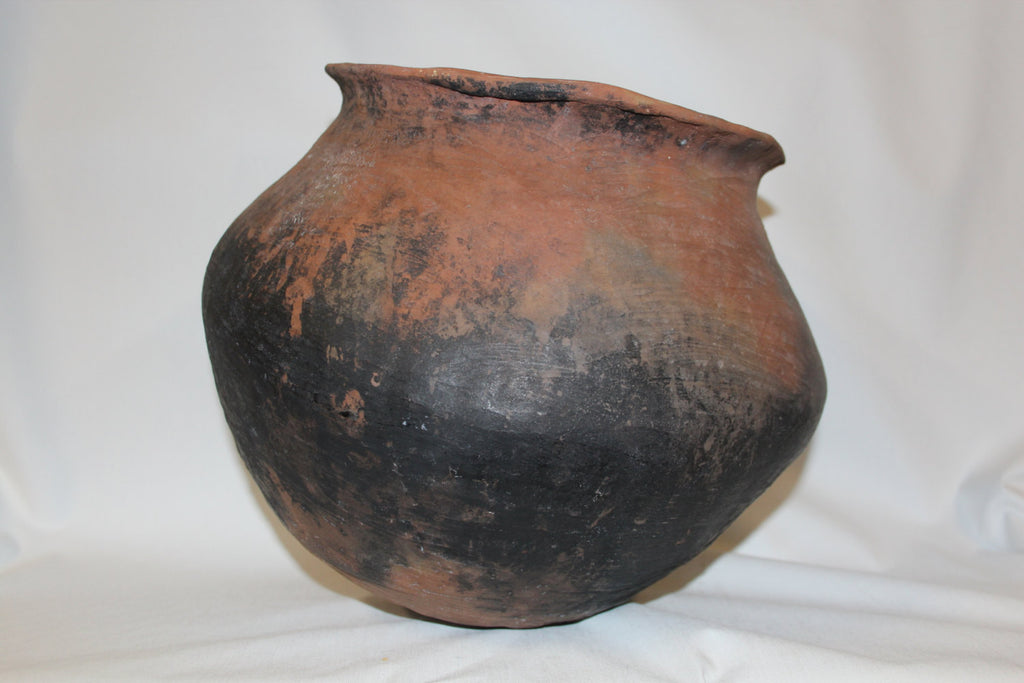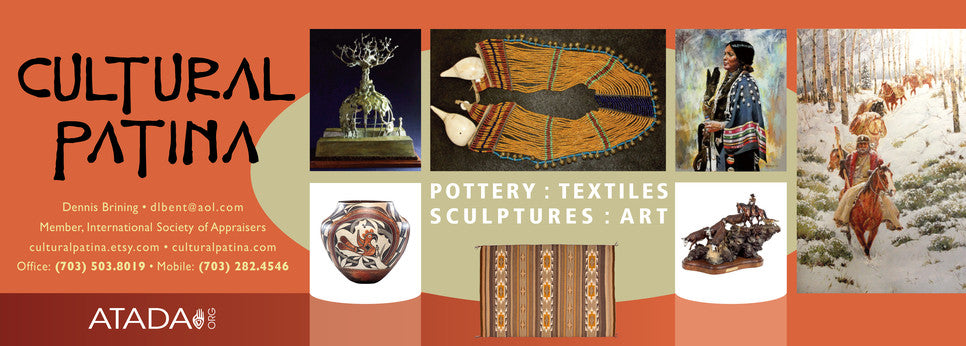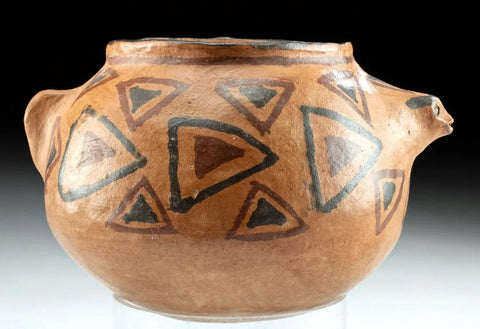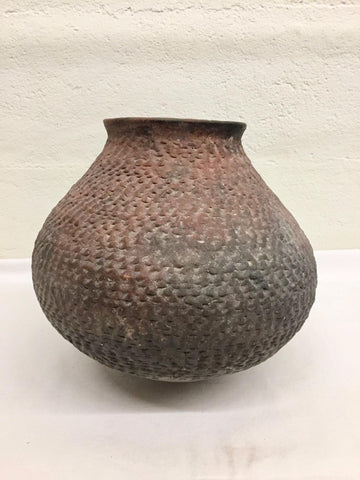
Mexico Pottery : Large Vintage Hand Coiled Pottery Olla In Very Good Condition #126
$ 575.00
Mexico Pottery
126. Description: Mid 1900's, Large vintage hand coiled pottery jar with excellent patina. Very good condition. The dimensions are 10-1/2" x 13".
"The Tarahumara Indians live in the remote regions of the Sierra Madre Mountains in the Mexican state of Chihuahua. They are northern Mexico's largest indigenous Indian tribes, and are a nomadic people who typically live in several different dwellings during the year, including caves.
Some Tarahumara live in caves, others inhabit houses made of stone, planks, and poles, built high in canyons of the Sierra Madres. It is a way of life that has changed little over centuries.
Although the Tarahumara are considered one of the few indigenous groups in North America that have been able to preserve their culture mostly unmodified despite more than 350 years of contact with outside populations, the increasing contact with non-Indians has put additional pressure on their way of life. This increasing contact has resulted in a rising trend toward the use of Spanish and away from their native language.
In many communities the Tarahumara Indians have adopted western wear. However, men sometimes wear their traditional clothes and women still always do. Both men and women wear bright-colored print blouses and shirts. Skirts are highly regarded by women, who wear many of them at a time, one on top of the other. Men and women alike wear waistbands or belts. They are knitted using their own designs and patterns and are used to hold up their pants, skirts and zapetas (loincloths).
Their Native American style pottery is utilitarian and often primitive and represents a craft that Native potters have made for centuries. Created by the pinch and coil method, Tarahumara Indian pots are made by hand without a wheel. The pot is formed by hand coiling clay for the shape of the vessel, then polished with a smooth stone.
A great part of today‰۪s Tarahumara traditions relate back to those learned from the Jesuit missionaries during the almost 150 years they lived together in colonial times. As main god, the Tarahumara Indians have a merger of Christ and their god, who is called Onor̼ame, who made and governs the world. Religious concepts include the concept of soul and its loss. Men are surrounded by good and bad beings; the wind is good and a tornado is bad.
In the most-populated communities 64% of the Rammuri over 15 years of age have no schooling; 26% did not finish elementary school; 43% between the ages of 6 and 14 do not attend school; 57% are illiterate (compared to 6% in the state of Chihuahua). There are not enough school alternatives for Indian culture. Most of the schools lack essential teaching material and furniture.
The future for the Tarahumara is uncertain. The threats to their well being and to their survival are numerous: diseases (including tuberculosis, malaria, dysentery, and consequently malnutrition); the scarcity of good farm land, lack of dependable water supply, the harshness of the climate, the general lack of top soil and the over exploitation of timber. They receive some help from Government agencies. The Instituto Nacional Indigenista have been in charge of looking after Indians in M̩exico. There are, however, many more Indians than this agency can hope to help in any significant way.
Can the Tarahumara continue to exist and lead the lives they want? Many who know them think they might not last more than another 50 years. Others argue that the Tarahumara are genetically strong, tough, resilient people who have maintained their culture largely intact while surviving exploitation, western religion, famines, and diseases for many centuries, and that they probably can continue doing so." (Source: Feria Maestros del Arte)


